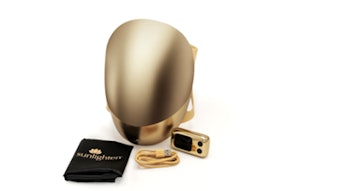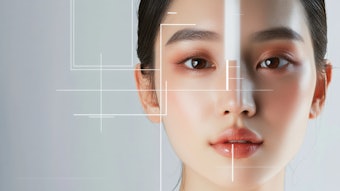
Most in the esthetic and medical esthetic fields are familiar with the terms intense pulsed light (IPL), light-emitting diode (LED) and LASER (light amplification by stimulated emission of radiation). Technically, a laser is a source of high-intensity optical, infrared or UV light. The photons involved in the laser-emission process all have the same energy and phase so that the laser beam is monochromatic and coherent, allowing it to be brought to a fine focus.
Coherent vs. noncoherent light sources
A laser beam is different from IPL and LED because it is coherent, simply meaning that the beam has the ability to remain focused over a distance. IPL and LED are noncoherent, meaning the light scatters with shorter depth of penetration, while laser is coherent, thus providing a targeted treatment. With coherence, the scattering of light decreases, allowing the light to strike the target at perpendicular angles, increasing its absorption and transmission to deeper tissues.
Cold laser therapy
Cold laser therapy—also known as low-level light therapy—supplies energy to the body in the form of nonthermal light photons, hence the term “cold laser.” Cold lasers use light waves in the near-infrared ranges that penetrate the deepest in the visible spectrum.
Cold laser light:
- Is monochromatic—a single wavelength in the 635–970 nm range;
- Is coherent—traveling in a straight, nondiverging line;
- Has a wavelength in the red portion of the electromagnetic spectrum;
- Is polarized—concentrating its energy as a defined spot; and
- Does not heat tissue.
Because of cold laser’s deep penetration, light is transmitted through the skin’s layers—the epidermis, dermis, and the subcutaneous tissue or tissue fat under the skin—and reaches the mitochondria of the cell. This is very important because the mitochondria are the cell’s power producers.
How does cold laser work? Mitochondria!
Mitochondria convert energy into forms that are usable by the cell. Located in the cytoplasm, they are the sites of cellular respiration that ultimately generate fuel for the cell’s activities. The mitochondria is the organelle known as “the powerhouse of the cell,” because of its ability to manufacture a substance called adenosine triphosphate (ATP). ATP is essential, because it is what your body uses for energy—in fact, it is the only substance your body can ultimately use as energy. Without adequate amounts of ATP, living organisms are unable to survive and thrive. On the contrary, abundant supplies of ATP mean that cells have adequate energy to do all the things they must do to not only stay alive, but also to thrive exceptionally. (See Mitochondria.)
If your body could create more ATP in a local area, the implications would be significant. Extra energy in the form of ATP can be used by cells, tissues and organs to do many things beyond simple survival. How can the cells create more ATP? The answer is cold laser therapy.
Cold laser and increased mitochondrial activity
Scientific research has shown that, although many cells have numerous kinds of receptors, the body has at least three specific kinds of receptors in every single cell. Receptors exist for:
- Neurotransmitters (serotonin, dopamine, acetylcholine and others);
- Hormones (insulin, various thyroid hormones, estrogen and others); and
- Light.
Cold laser impacts the light receptors. Each cell can contain thousands of mitochondria, which move about producing ATP in response to the cell’s need for chemical energy. When the infrared light of a cold laser is applied to an affected body area at a frequency of between 600–905 nm (which penetrate up to 5 cm below the skin’s surface), it causes the mitochondria to create more cellular energy in the form of ATP. When various body cells or tissues are presented with extra ATP, they can use it to detoxify, rebuild, regenerate, reduce inflammation, produce collagen and elasticity, and generally aid in the healing process of injured or diseased tissue.1
In dermatology, cold laser therapy has beneficial effects on wrinkles, acne scars, hypertrophic scars, and burns. It can reduce UV damage both as a treatment and as a prophylactic measure. In pigmentary disorders, such as vitiligo, cold laser therapy can increase pigmentation by stimulating melanocyte proliferation and reducing depigmentation by inhibiting autoimmunity. Inflammatory diseases, such as psoriasis and acne, can also be managed.2, 3
European and Japanese physicians have been using cold laser extensively for decades for pain-reduction, wound-healing, sports therapy and esthetic treatments. In the United States, cold lasers have been used during the past several years primarily for pain management, sports therapy and chiropractic treatments. Now, cold lasers are gaining popularity in esthetic treatments, due to their efficacy and healing, stimulating and restoring ability for the skin at the cellular level. In addition, cold laser therapy may be used on all skin types and tones without risk of damaging the skin.4 (Editor’s note: Cold laser is generally within the scope of practice for estheticians if it is a Class I device, but you should check your specific state regulations before offering treatments based on the equipment. Complete contact information for the state boards can be found on www.SkinInc.com/education/statelicensing.)
Another key benefit of cold laser therapy in esthetic treatments is that the treatment time is short—10–15 minutes during a facial—and there is no downtime or pain during the treatment. It is performed on dry skin that has been cleansed and exfoliated. Using skin care products with high levels of active ingredients, such as cosmeceutical-grade skin care that has at least one bioactive ingredient working at the cellular level, will have significant penetration and increased efficacy following cold laser therapy. The results of cold laser therapy in esthetic treatments improve with each service. Generally, packages of treatments are recommended in a series of three, six or nine treatments, depending on the skin’s damage and needs. Once a state of skin health is obtained, a maintenance program of monthly or bimonthly treatments maintain the results. Given the versatile benefits and safety of cold laser therapy, it can be an instrumental component of an overall beauty and wellness program.
GENERAL REFERENCES
www.doctorschierling.com/1/post/2012/10/cold-laser-cure.html (Accessed Jan 13, 2014)
J Tunér and L Hode, The New Laser Therapy Handbook: A Guide for Research Scientists, Doctors, Dentists, Veterinarians and Other Interested Parties Within the Medical Field, Sweden, Prima Books (2010)
J Tunér and L Hode, Low Level Laser Therapy, Clinical Practice and Scientific Background, Sweden, Prima Books (1999)
REFERENCES
- www.nobelprize.org/nobel_prizes/chemistry/laureates/1997/boyer-lecture.pdf (Accessed Jan 13, 2014)
- P Avci, A Gupta, et al., Low-level laser (light) therapy (LLLT) in skin: stimulating, healing, restoring, Semin Cutan Med Surg 32 1 41–52 (Mar 2013)
- MH Aziz-Jalali, SM Tabaie and GE Djavid, Comparison of Red and Infrared Low-level Laser Therapy in the Treatment of Acne Vulgaris, Indian J Dermatol 57 2 128–130 (Mar 2012)










